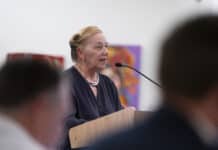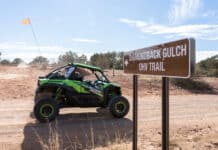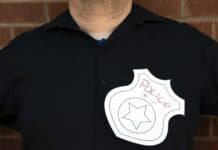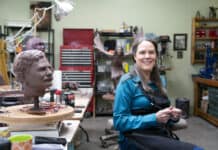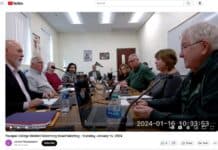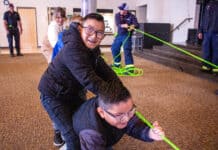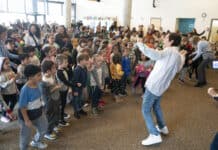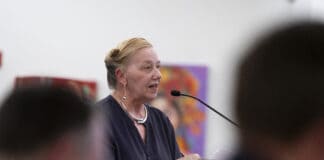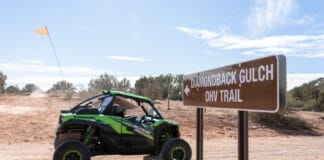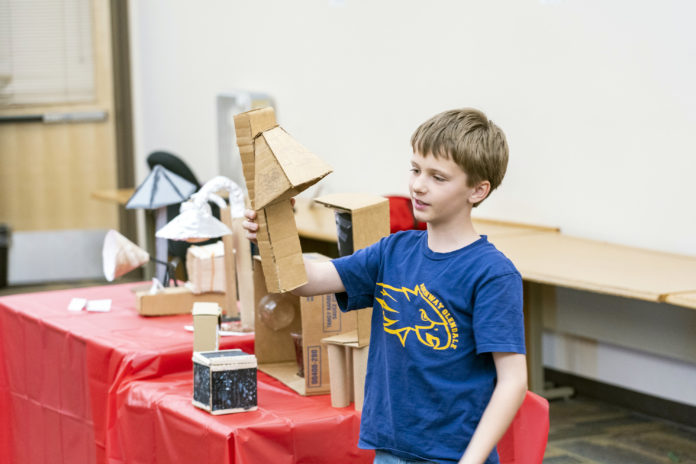
Sedona students are tackling some of the city’s biggest issues.
West Sedona School students are working in high gear with their Science, Technology, Engineering and Math, better known as STEM, three-year grant from Northern Arizona University and Arizona Public Service.
Each grade level was given a separate community issue and partner to teach their students practical ways to prevent pollution and educate the public.
“West Sedona School was awarded a membership in the NAU and APS STEM Grant last March 2021 and has never looked back,” Deb Sanders, teacher and grant point person at West Sedona School, said. “Our school’s ‘STEM program evolution’ has taken the [many] steps this year and will continue to expand during the grant’s remaining Year 2 and Year 3 due to the high standards established by the West Sedona School STEM Leadership Team within our STEM School Action Plan.”
Lighting up the city
The fifth grade has been focusing on light pollution, specifically with interest in the International Dark-Sky Association guidelines in the Sedona area.
Last Friday, city of Sedona Senior Code enforcement officer Brian Armstrong joined Tim Smith and Danielle Beinfest’s fifth-grade classes in their presentations of dark sky association-friendly lighting fixtures.
“It’s great for the kids to start learning about the Dark Sky because of how important it is in Sedona. We really want to preserve the night skies to see the stars and whatnot,” Armstrong said. “So getting the kids involved early on in keeping that awareness in mind, then they can design something like they did here for their actual homes.”
After their presentations, Armstrong was able to give the students feedback according to their light fixtures and the International Dark-Sky Association Guidelines. And Armstrong admitted it was hard to critique the student’s work after their hard work and thought into their light prototypes.
According to Armstrong, complaints about unapproved lighting are the third most popular calls for the city code enforcement to receive, behind parking-related complaints and short-term rental concerns.
Based on their prototype’s feedback, students will be returning to their projects this week to make modifications for the final presentation on Friday. Armstrong hopes through the student’s projects, that their own parents and households will be encouraged to update their lighting to fit the dark sky guidelines.
These include a total outdoor light output that shall not exceed 100,000 lumens per net acre for all development except single-family residential uses, with specific guidelines for individual lights. No specific, individual light may go above 2,000 lumens without special permissions.
But, businesses and larger buildings have different laws allowing brighter lights to comply with safety laws involving nighttime lighting.
Sedona was established as an IDA in June of 2014. The city was the world’s eighth official dark sky city, closely followed by the Village of Oak Creek and Cottonwood.
Bench Building
The fourth-grade class has been focusing on ground pollution through their bench building project for common areas in Sedona.
“Once we finish our benches, they will be gifted to our community to help provide seating and educate those that see them about environmental awareness and impact,” fourth-grade teacher Kelly Cadigan said. “Our goal is to continue with STEM projects in order to make a difference.”
These benches will have messages that encourage tourists to “Leave No Trace” when they go on their hikes. According to the school, currently, there is no set location for the benches but hopefully, they will be placed in popular hiking spots.
Cadigan’s class will be working on the benches in the next few weeks during their class time and some after-school time as well.
Grade Level Community Partners
At the faculty meeting in February, the grade levels were assigned different lesson plans and community partners for their classes’ lesson plans. These lesson plans have been taught from the beginning of March and will continue until mid-April. At their May meeting, West Sedona School will assess how well each lesson plan went based on classroom success.
Kindergarten and grade 1: Noise pollution and partnership with Friends of the Forest volunteer Bob Marriot.
Grade 2: Ground pollution and community partnership with Friends of the Forest President Annie Glickstein.
Grade 3: Erosion and water pollution and partnership with the U.S. Forest Service Visitor Services and Heritage Site Supervisor L.J. Varon-Burkhardt.
Grade 4: Ground pollution and partnership with professional woodwork Tom Cadigan.
Grade 5: Light pollution and partnership with the city of Sedona code enforcement officer Brian Armstrong, Verde Valley Astronomers’ Club Dave Norton and Lowell Observatory Curt Schneider.


